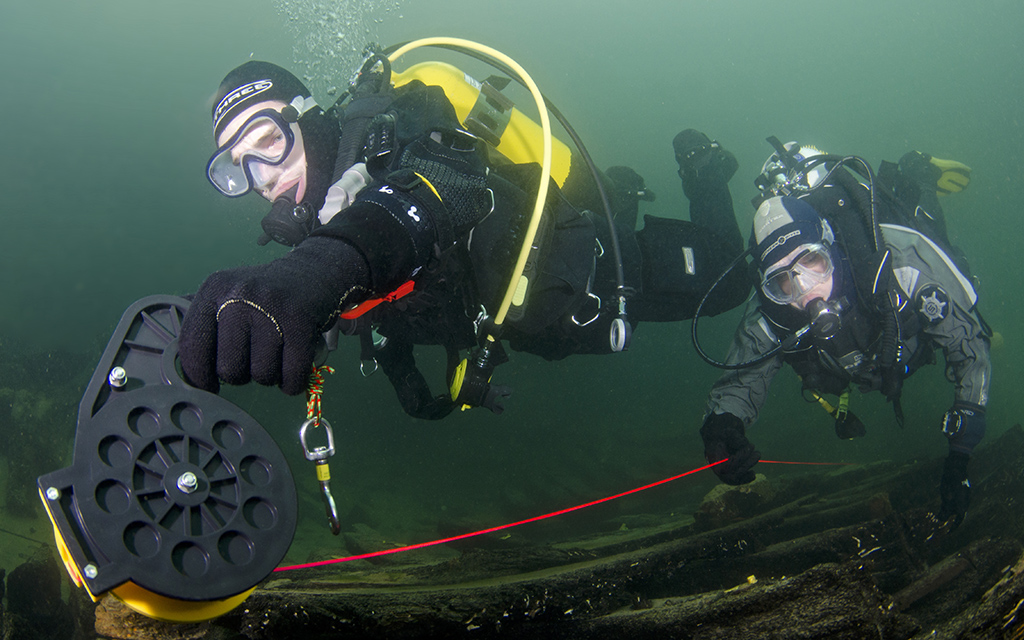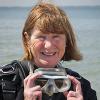
Photo credit: Simon Rogerson
Jane Maddocks highlights three projects that demonstrate what a group can achieve when they dive with a common goal.
Back in the mists of time, it used to be said by other organisations that BSAC only trained divers so that they could train more divers to train divers. Since then, I have noticed that so many dive clubs have realised that happy divers mean more members who renew their membership because diving is such fun.
There are so many ways to reach your best diving life.
One of the greatest pleasures in the world is to take someone you have taught on their first real open water dive, when you can introduce them to fish and marine life. That smile on surfacing is priceless! Then, as time evolves, you watch that same student go on to dive new sites with new equipment, having such fun because you took the time to train and inspire them. I have watched some of my students go way beyond what I could ever achieve, and it is just so satisfying (and also a little bit jealous making).
Teaching and training should have a purpose of letting divers access what makes them happy in the underwater world. Happy divers set a great example to those in the club who haven’t yet discovered where their ‘dive happy’ is. It may be training, but what else can your branch do to inspire your divers of all ages to be involved, to love the sport, and to take changes in the marine environment seriously?
I want to talk briefly about three BSAC branch projects from the past.
The first is Chester Sub Aqua Club. It began as a branch dive weekend and culminated in a project that engaged so many of the branch members and resulted in an hour-long YouTube presentation: A Tale of Two Trawlers. It is a story of how a small project went on to involve many divers and skills. It was a puzzle that revolved around misidentified wrecks. A huge amount of learning went on and the end product was a presentation, well worth viewing on YouTube.
The second was a study by Matt Doggett, Martin Openshaw and Sheilah Openshaw looking at black bream breeding behaviour, using remote cameras as well as diver observation before most people realised how easy it is to set up a remote underwater camera.
Breeding habits were evidenced that made a real difference to the understanding of how this shy species behave. Perhaps next time you dive in shallow waters off our beaches, and you see a shimmer of light almost beyond your vision, you could put up a Baited Remote Underwater Video (BRUV). Having completed your Underwater Surveyor course, why not see what fishy behaviours your club or centre could discover. You can read more about the Black Bream project by going to the British Sub-Aqua Jubilee Trust Funded Projects page at bsac.com/jubileetrust
Their results, observed and recorded in shallow water, were impressive. A small but inspirational group who went on to give talks about the work they did, encouraging others to follow their example. At least four other groups are now looking at fishy behaviour because of Matt, Martin, and Sheilah.
So, wrecks, marine life, and now the final project: palaeolithic landscapes and a bit of fossil hunting while ‘Exploring the Great Fossil Mine of the southern North Sea.’
This again was a different project. BSAC members who were also archaeologists/early human specialists spent two weeks looking for evidence of early human occupation off the beaches of Norfolk. This report is heavy duty, but what was found was significant in the Early Human world. Again, you will find this report in the British Sub-Aqua Jubilee Trust Funded Projects page. These members decided to have a go at something completely out of the ordinary.
Diving with a purpose gives much greater enjoyment than just ‘swimming around stuff’. Doing things while diving is epic and will keep your members enthusiastic, because they’re having such a good time with you. They don’t have to be dives that result in reports or webinars, just dives that give your members a reason to keep on diving with you.
Article ‘The power of purpose’ by Jane Maddocks first published in SCUBA magazine, Issue 149 October 2024.

 Author: Jane Maddocks | Posted 29 Oct 2024
Author: Jane Maddocks | Posted 29 Oct 2024



